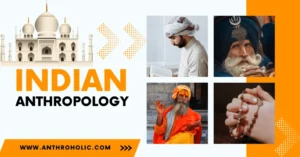AI Answer Evaluation Platform Live Now. Try Free Answer Evaluation Now
Computer Aided Mapping
As the practice of archaeology becomes increasingly digital, Computer Aided Mapping (CAM) is playing an integral role in the preservation, analysis, and communication of archaeological data. Combining technology with conventional archaeological practices, CAM offers revolutionary perspectives on interpreting the past [1].

The Genesis of Computer Aided Mapping
Before delving into CAM’s specificities, it’s important to understand the context in which it emerged.
- Late 1960s and early 1970s: Earliest attempts to use computers in archaeology. This period saw the use of punched cards and mainframe computers to process basic data [2].
- 1980s: Advent of the first Computer Aided Design (CAD) software. Archaeologists began creating digital plans and maps [3].
- Late 1990s: Birth of Geographical Information Systems (GIS), elevating CAM to a new level. GIS enabled archaeologists to analyze and visualize data in innovative ways [4].
Technology Behind Computer Aided Mapping
The technology behind CAM has seen considerable growth. Several tools and software have become paramount in this sphere:
- CAD Software: Programs like AutoCAD enable archaeologists to create precise 2D and 3D models of archaeological sites.
- GIS Tools: GIS tools like ArcGIS offer archaeologists the ability to overlay and analyze spatial data in relation to environmental factors.
- Photogrammetry Software: Programs such as Agisoft PhotoScan or Metashape allow archaeologists to create 3D models of sites or objects from photographs.
- Remote Sensing Technology: Tools like LiDAR provide the ability to scan and map large areas, even through dense vegetation, often revealing previously unknown structures or features.
| Technology | Example | Primary Use |
|---|---|---|
| CAD | AutoCAD | Creating 2D and 3D models |
| GIS | ArcGIS | Analyzing spatial data |
| Photogrammetry | Metashape | Creating 3D models from photos |
| Remote Sensing | LiDAR | Scanning and mapping large areas |
Benefits of Computer Aided Mapping
The application of CAM in archaeology has brought about several significant benefits:
- Greater Accuracy: CAM offers a high level of precision that manual mapping cannot achieve.
- Enhanced Data Preservation: Digital data is easier to store, replicate, and distribute than physical records.
- Improved Data Analysis: With CAM, complex spatial relationships can be analyzed, and patterns can be detected that might otherwise be missed.
- Better Public Engagement: CAM outputs can be used to create engaging visualizations that make archaeological findings more accessible to the public.
Case Study: The Use of CAM in Maya Archaeology
The ancient Maya civilization, prevalent across parts of Central America, has been a focal point for the application of CAM, particularly using LiDAR. LiDAR technology has uncovered a multitude of previously undiscovered structures, revealing a vastly interconnected and urbanized society.
| Pre-LiDAR | Post-LiDAR |
|---|---|
| Limited understanding of urban structures | Revealed interconnected and urbanized society |
| Sites studied individually | Recognition of inter-site connectivity |
| Dense vegetation obstructed discovery | Vegetation penetrated, revealing hidden structures |
Conclusion
As archaeological endeavors continue to evolve, CAM remains at the helm of this transformation. Despite certain challenges, such as the high cost of equipment and need for specialized training, the benefits of CAM in archaeology are undeniable. As the field continues to evolve, it’s certain that CAM will play an increasingly pivotal role in unearthing our past.
References
[1] Pleticha, H. E. (2019). Mapping the Past: GIS Applications in Archaeology.
[2] Green, K., & Rix, J. (1989). Computers in archaeology. Cambridge University Press.
[3] Pritchard, D. (1995). The role of CAD in archaeological recording. AutoCAD World.
[4] Wheatley, D., & Gillings, M. (2002). Spatial technology and archaeology: The archaeological applications of GIS.




